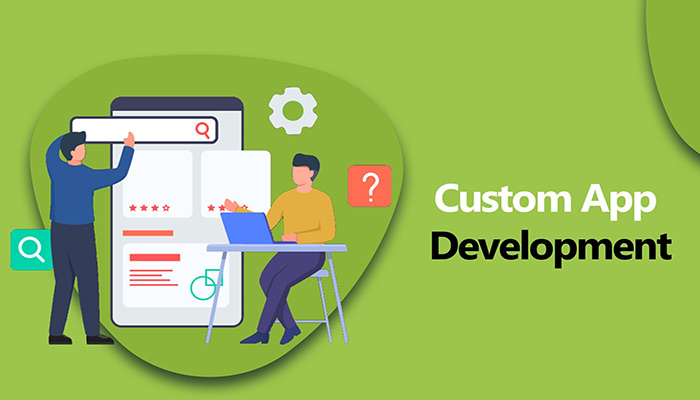Developing custom apps for Shopify can be a critical step for many businesses looking to extend the functionality of their online store. However, the cost of developing these apps can vary widely based on several factors. Understanding these factors is essential for businesses planning to invest in custom app development for their Shopify store. Here’s an in-depth analysis:

Table of Contents
Initial Considerations and Costs
- App Complexity and Features: The complexity and the number of features of the app significantly influence the development cost. Simple apps with basic functionalities will cost less compared to complex apps with advanced features like AI integration or extensive database interactions.
- Design and User Experience: Custom design and user experience (UX) are crucial for app success. Design costs can vary depending on the complexity of the UI/UX design, with more intricate and interactive designs leading to higher costs.
- API Integration: Integrating the app with Shopify’s API and potentially other third-party APIs adds to the development cost. The complexity of these integrations, especially if they require custom API development, can significantly impact the price.
- Custom Backend Development: For apps that require custom server-side logic, backend development costs can be substantial. This includes database design, server logic, and ensuring secure data handling.
Development Team and Location
- In-House vs. Outsourced Development: Hiring an in-house development team or outsourcing to an agency or freelancers will significantly impact costs. Outsourced development, especially to countries with lower labor costs, can be more cost-effective.
- Developer Expertise and Rates: Experienced developers or agencies specializing in Shopify app development typically charge higher rates. The developer’s geographical location also plays a role in determining the hourly rates.
Ongoing Maintenance and Updates
- Maintenance and Support: After the app is launched, ongoing maintenance and support are crucial. This includes fixing bugs, updating the app for new Shopify releases, and potentially adding new features, all of which incur additional costs.
- Updates for Compliance: Regular updates to comply with Shopify’s evolving guidelines and API changes are necessary. Staying compliant often requires regular code reviews and updates.
Marketing and Distribution Costs
- App Store Fees: If you plan to distribute the app through Shopify’s App Store, consider the cost of Shopify’s revenue sharing model. Shopify charges a commission on sales for paid apps.
- Marketing and Promotion: Marketing the app to reach potential users can involve significant costs. This includes costs for digital marketing, promotional materials, and potentially hiring marketing specialists.
Licensing and Third-Party Costs
- Third-Party Services and Tools: Using third-party services or tools for functionalities like payment processing, SMS services, or analytics tools can add to the development cost.
- Licensing Fees for Software: Depending on the development approach, there may be costs associated with licensing for certain software or development tools.
Testing and Quality Assurance
- Testing and Quality Assurance: Rigorous testing, including functional testing, performance testing, and security audits, is essential and can be a substantial part of the development cost.
Additional Factors Influencing Cost
- App Scalability: If the app needs to scale to handle a large number of users or transactions, this can increase the complexity and cost of the development.
- Data Security and Privacy Compliance: Ensuring data security and compliance with privacy laws like GDPR, if applicable, can add to the development costs, especially if the app handles sensitive customer data.
- Time Frame and Deadlines: Projects with tight deadlines may require more resources or expedited work, leading to higher costs.
- Post-Launch Services: Services like user training, documentation, and customer support add to the overall cost but are crucial for app success.
Project Management and Coordination Costs
- Project Management: Effective management of the development process, especially if working with a team or multiple stakeholders, can add to the costs.
- Feedback and Iteration Cycles: The development process might involve several iterations based on feedback, which can extend the timeline and add to the cost.
- Legal and Compliance Costs: Ensuring the app adheres to legal standards and intellectual property laws, particularly if the app is intended for a global market, can incur additional costs.
Conclusion
The cost of developing a custom Shopify app can vary greatly based on factors like the complexity of the app, the choice of development team, ongoing maintenance needs, and marketing efforts. It’s crucial for businesses to carefully consider these factors and plan their budget accordingly. An effective way to manage costs is to clearly define the app requirements, prioritize essential features, and plan for long-term maintenance and updates. A well-developed custom app can significantly enhance the functionality of a Shopify store, improve user experience, and ultimately contribute to the business’s success.
Follow – https://shiftkiya.com for More Updates

 Vidmate – The Best Video Downloading App Ever Available For Entertainment Lovers
Vidmate – The Best Video Downloading App Ever Available For Entertainment Lovers Steps to Take for Develop a Triumphant Mobile App
Steps to Take for Develop a Triumphant Mobile App How to Sell Your Old Device in Preparation for Apple X PLUS
How to Sell Your Old Device in Preparation for Apple X PLUS How to create App for your company
How to create App for your company